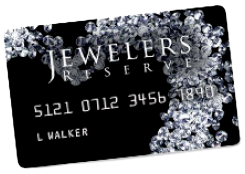Photo by Jean-Claude Caprara at Shutterstock
Mechanical watches are delightfully complex devices, and some mechanical watches are also chronographs. Chronographs are measuring devices to record intervals of time. They have three major functions. One pusher on the side of the watch starts and stops a central seconds hand, while a second pusher resets the chronograph to 12. The chronograph functions do not interfere with the time displays.
Chronograph Terminology and History
Sometimes chronographs are referred to as timers or stopwatches, but these are inaccurate terms. Stopwatches and timers only measure intervals of time without providing the time of day. Sometimes the terms chronograph and chronometer are used interchangeably, but the two terms don’t have the same meaning.
A chronometer is a watch that has been certified for accuracy by a governing body. For example, the Official Swiss Chronometer Testing Institute, or COSC, tests and certifies chronometers made by Swiss manufacturers. The Glashütte Observatory serves the same function in Germany. Some manufacturers, such as Omega and Rolex, also conduct their own testing and certification.
The word ‘chronograph’ actually means ‘time writer.’ The very first chronograph appeared in the 19th century. Supposedly, King Louis XVIII wanted to time horse races. The first chronograph was a rather large clockwork mechanism inside a box, but chronographs were small enough to fit inside a watch by the 20th century.
Chronograph history includes association with many professions, such as doctors, soldiers, and pilots. A chronograph manufacturer, Hamilton, started out making pocket watches for American railroads and ended up with a Swiss company making chronographs for Britain’s Royal Air Force. Mechanical chronograph watches are still manufactured today, and they can be purchased in Denver, CO.
Chronograph Function
Chronograph watches record seconds, minutes, and hours. Exceptionally complex models can even split seconds into small units and record intervals down to a 10th of a second. The ability to measure such small increments is provided by amazingly complex mechanisms inside small watches. Of course, we now have digital devices that record intervals of time in much smaller increments. Most digital devices are operated by a simple touch of a button.
This technology is valuable, and probably more useful for modern tasks, but the tiny gears, wheels, and pistons of mechanical chronographs are a truly impressive masterpiece of engineering. A mechanical chronograph doesn’t rely on electricity or batteries, and the probability of a digital timer continuing to function correctly over a hundred years from now isn’t very high.
Mechanical chronographs in vintage watches will function as long as they are cared for and kept in good repair. Repairing these mechanisms is not a job for amateurs. Consult a watch repair professional for any observed or suspected problems with a chronograph watch. Most watch repair specialists also offer maintenance services to keep your watch running smoothly. If you’re looking for a new watch or a specific type of watch or chronograph, you can find many excellent pieces at Matheu’s Fine Watches & Jewelry.
Integrated Chronographs
An integrated chronograph model contains an additional mechanism for measuring time above the bridges of the main watch movement. The mechanism to record hours is positioned on or near the dial side. Many integrated chronograph mechanisms also incorporate column wheels and horizontal clutch systems.
Modular Chronographs
A modular chronograph mechanism has a main plate and bridges that are mounted onto the main watch movement without combining functions. Modular chronograph watch repair is simplified because the chronograph mechanism is completely separate from the watch movement.
Split-Seconds Chronograph
A split-seconds chronograph, sometimes known by the French term, Rattrapante, independently records two intervals of time. In some ways, a Rattrapante can be viewed as two chronographs combined into a single mechanism. There are two command units that operate seconds hands independently. Watch repair professionals spend a lot of time learning Rattrapante systems so they can effectively maintain and repair these complex mechanisms.
Modern Chronograph Movements
The two most common chronograph movements in modern times are the column wheel and coulisse lever. Column wheel movements contain a mechanism with a small protrusion that rotates in single increments each time the pusher is pressed. A mechanical finger is inserted between the teeth of the column wheel to activate functions. Vintage and high-grade watches often contain column wheel movements.
Column wheels rely on very precise designs. Watch repair requires skill and intense concentration because even the tiniest error will interfere with correct function. Watch enthusiasts, and even people with a casual interest, often prefer watches with column wheel movements because of their smooth articulation and high degree of craftsmanship.
Coulisse lever movements are easier to manufacture. They are also more resistant to damage and don’t require quite as much care and precision as a column wheel design. Activating the pusher on a coulisse lever movement sets a small, heart-shaped cam, or coulisse, into a back and forth motion that starts, stops, and resets the chronograph.
The coulisse lever requires more pressure to begin operation. Although coulisse lever movements are less precise and more forgiving of inexpert treatment than column wheels, they are still complex mechanisms that should be handled by watch repair professionals for maintenance and corrections.
Automatic Movements
Chronograph mechanisms had to be hand-wound up until 1969. Automatic chronograph movements utilize a micro-rotor, which is a small oscillating weight. Another type of automatic chronograph uses a full-sized winding rotor. Most chronographs manufactured since 1969 are automatic, but hand-wound chronographs are still available and some users prefer the hand crank versions and the subsequent interaction with their watches. Watch repair professionals have to be familiar with multiple movement types.
Contact the watch repair professionals at Matheu’s Fine Watches & Jewelry in Denver, CO, for watch repair and maintenance. They are trained and certified as authorized service providers for an extensive variety of watch brands.





